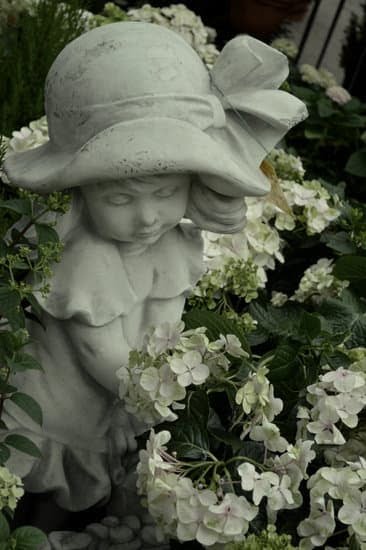Are you looking for a unique and eco-friendly way to enhance your outdoor space? Consider incorporating cork into your landscape design. In this article, we will explore the benefits of using cork in landscape design, various types of cork landscaping materials, how to create a sustainable cork landscape, design tips and ideas, as well as maintenance and care. Additionally, we will showcase successful cork landscaping projects through case studies.
Using cork in landscape design not only adds a touch of natural beauty to your outdoor area but also offers numerous benefits. From its sustainability and durability to its natural insulating properties and resistance to mold and insects, cork is a versatile material that can elevate the aesthetic appeal of any outdoor space. Whether you are creating a small garden or redesigning a larger outdoor area, incorporating cork can provide a fresh and environmentally friendly approach.
In the following sections, we will delve deeper into the advantages of using cork in landscape design, explore the different types of cork landscaping materials available, provide insight on creating a sustainable cork landscape, offer design tips and ideas for incorporating cork into your outdoor space, as well as guide you on the maintenance and care of your Cork Landscape. Additionally, we will feature real-life case studies of successful cork landscaping projects to inspire you in your own endeavors.
Benefits of Using Cork in Landscape Design
When it comes to landscape design, cork is a versatile and sustainable material that offers a wide range of benefits. One of the key advantages of using cork in landscape design is its natural insulating properties. Cork is lightweight, highly durable, and naturally resistant to water and fire, making it an ideal choice for outdoor landscaping projects.
Additionally, cork is a renewable resource, as it is harvested from the bark of cork oak trees without causing any damage to the tree itself. This makes it an eco-friendly option for environmentally-conscious landscapers.
Another benefit of using cork in landscape design is its versatility. Cork can be used in various landscaping applications including pathways, decking, outdoor furniture, and even decorative elements such as sculptures and retaining walls. Its natural texture and color make it a visually appealing choice that can add warmth and character to any outdoor space.
In addition to its practical and aesthetic benefits, using cork in landscape design also has positive environmental impacts. By choosing cork over traditional landscaping materials such as concrete or plastic, you are helping to reduce your carbon footprint and promote sustainability. Overall, incorporating cork into your landscape design not only enhances the visual appeal of your outdoor space but also aligns with eco-friendly practices.
| Advantages | Benefits |
|---|---|
| Natural insulating properties | Lightweight and durable |
| Versatile applications | Eco-friendly and sustainable |
| Positive environmental impact | Enhances visual appeal |
Types of Cork Landscaping Materials
When it comes to creating a unique and sustainable landscape, using cork as a material is an innovative and eco-friendly option. There are several types of cork landscaping materials that can be used to enhance the aesthetic appeal of outdoor spaces while also promoting environmental sustainability.
One popular type of cork landscaping material is cork bark, which can be used to create pathways, retaining walls, and decorative elements. This natural material not only adds visual interest to the landscape but also provides insulation and moisture retention properties, making it ideal for areas with varying weather conditions.
Another versatile cork landscaping material is cork mulch, which can be used to cover soil in gardens and flower beds. Cork mulch helps conserve moisture in the soil, suppresses weed growth, and regulates soil temperature. Additionally, it is a long-lasting option that does not require frequent replacement like traditional wood mulch.
Furthermore, cork tiles or panels can be used for creating unique hardscape features such as patios, decks, and accent walls. These durable and sustainable materials add warmth and texture to outdoor living spaces. Additionally, they are low-maintenance and resistant to mold and insects, making them an ideal choice for outdoor applications.
In summary, incorporating various types of cork landscaping materials offers numerous benefits for both the environment and aesthetics. Whether it’s using cork bark for pathway construction or installing cork tiles for hardscape design, these materials provide versatility and longevity in sustainable landscape projects.
| Cork Landscaping Material Type | Benefits |
|---|---|
| Cork Bark | Insulation properties; visual appeal; moisture retention |
| Cork Mulch | Moisture conservation; weed suppression; long-lasting |
| Cork Tiles/panels | Durability; low maintenance; resistance to mold and insects |
Creating a Sustainable Cork Landscape
Cork, a natural, renewable, and sustainable material, has gained popularity in landscape design due to its numerous benefits and eco-friendly nature. Creating a sustainable cork landscape not only provides aesthetic appeal but also contributes to environmental conservation.
When considering the use of cork in landscape design, there are various materials and elements that can be incorporated to achieve a sustainable outcome. Some key components to consider include:
- Cork mulch: A biodegradable and insulating alternative to traditional wood mulch.
- Cork pavers: Durable, low-maintenance, and environmentally friendly option for walkways and patios.
- Cork bark: Can be used as a decorative element while providing natural insulation and moisture retention.
One of the primary advantages of using cork in landscaping is its sustainability. Cork is harvested from the bark of cork oak trees, allowing the trees to remain unharmed in the process. As such, creating a sustainable cork landscape promotes the preservation of these trees while also reducing the use of non-renewable resources.
In addition to utilizing cork materials, incorporating native plants into your cork landscape design can further enhance its sustainability. Native plants require less water, pesticides, and fertilizers, making them an eco-friendly choice for landscaping. By blending cork materials with native plants in your landscape design, you can create an environmentally conscious outdoor space that is both beautiful and sustainable.
Cork Landscape Design Tips and Ideas
When it comes to implementing a cork landscape idea, there are numerous design tips and ideas that can help you create a unique and sustainable outdoor space. Cork is a versatile material that can be used in various ways to enhance the aesthetics and functionality of any landscape. Whether you want to create a cozy patio, a lush garden path, or a sustainable water feature, cork can be the perfect material for your landscaping project.
Drought-Tolerant Cork Gardens
One creative way to incorporate cork into your landscape design is by creating a drought-tolerant garden. Cork offers excellent insulation properties, which means it can help retain moisture in the soil and reduce water evaporation.
By using cork mulch or ground cover in your garden beds, you can create an attractive landscape that requires less irrigation and maintenance. Additionally, drought-tolerant plants such as succulents and cacti pair well with cork landscaping materials, resulting in an environmentally-friendly and visually appealing garden.
Cork Paving and Walkways
Another innovative use of cork in landscape design is through the construction of paving and walkways. Cork paving tiles are not only eco-friendly but also provide a soft and comfortable surface for walking.
These tiles come in various colors and sizes, allowing you to create custom designs that complement your overall landscape theme. Whether you want to incorporate a winding cork pathway through your garden or create a stylish patio with cork pavers, this material offers endless possibilities for adding charm and functionality to your outdoor space.
Vertical Cork Gardens
For those looking to maximize their outdoor space, vertical cork gardens offer a creative solution for adding greenery to limited areas. By utilizing cork wall panels or containers filled with cork substrate, you can create stunning living walls that showcase a variety of plants while serving as eye-catching focal points in your landscape design. Vertical cork gardens not only provide insulation benefits but also contribute to air purification and biodiversity within the urban environment.
By incorporating these tips and ideas into your landscape design project, you can unleash the full potential of using cork materials while creating an environmentally-conscious and visually captivating outdoor space. Whether it’s through drought-tolerant gardens, paved walkways, or vertical green walls, implementing a cork landscape idea can elevate the overall aesthetic appeal of any outdoor setting while promoting sustainability.
Cork Landscape Maintenance and Care
Cork landscapes are not only visually stunning, but they are also low-maintenance and eco-friendly. However, just like any other landscape, cork landscapes require regular maintenance to keep them looking their best. Proper care will ensure that your cork landscape continues to thrive and remain beautiful for years to come.
Regular Maintenance
One of the key aspects of caring for a cork landscape is regular maintenance. This includes tasks such as weeding, pruning, and watering. Weeds can quickly overtake a cork landscape if not kept in check, so regular weeding is essential. Additionally, pruning any plants or trees in your cork landscape will help to maintain their shape and health.
Watering
While cork is a very drought-tolerant material, newly planted cork landscapes will still need regular watering until they become established. Once established, minimal watering may be needed during dry periods. It’s important to monitor the soil moisture levels and water accordingly to avoid overwatering.
Soil Management
Proper soil management is crucial for the health of any landscape, including cork landscapes. Regularly testing the soil pH levels and nutrient content will ensure that it remains conducive to plant growth. Adding organic matter and mulch can also help with moisture retention and weed control in a cork landscape.
By following these maintenance and care tips, you can ensure that your cork landscape remains healthy and vibrant year-round. Implementing these practices will not only enhance the beauty of your outdoor space but also contribute to the sustainability of your cork landscape idea by promoting its long-term health and resilience.
Case Studies
Cork has become a popular choice for landscaping projects due to its sustainability and aesthetic appeal. Many successful cork landscaping projects have demonstrated the versatility and beauty of this natural material. Here are some case studies that showcase the use of cork in landscape design:
1. The Cork Pathway: In a residential garden in the suburbs, a winding pathway made from cork bark was installed to create a unique and eco-friendly walkway. The natural texture and color of the cork bark added an organic and earthy feel to the garden, while providing a durable and low-maintenance surface for daily use.
2. Cork Retaining Walls: In a commercial development project, cork was used to build retaining walls that not only served their functional purpose but also added an aesthetically pleasing element to the outdoor space. The natural insulating properties of cork helped regulate soil temperature, which proved beneficial for the plants growing in close proximity.
3. Cork Mulch Gardens: Several public parks have incorporated cork mulch as a sustainable alternative to traditional wood or rubber mulch. The light color of the cork mulch brightens up the landscape, while its ability to retain moisture has improved the health of the surrounding plant life.
These case studies highlight how cork can be creatively used in various landscaping projects, from small-scale residential gardens to large commercial developments. By showcasing these successful examples, more individuals and organizations can be inspired to consider using cork in their own landscape designs.
Conclusion and Call to Action
In conclusion, utilizing cork in landscape design offers numerous benefits for both the environment and the homeowner. The use of sustainable materials like cork can contribute to a more eco-friendly and low-maintenance outdoor space. With its natural beauty, durability, and versatility, cork has become an increasingly popular choice for landscaping projects.
As discussed in this article, the benefits of using cork in landscape design are numerous. From its insulating properties to its resistance to rot and mold, cork landscaping materials are not only practical but also aesthetically appealing. Whether it’s for creating pathways, mulching gardens, or even as an alternative to traditional decking materials, cork provides a unique and sustainable option for outdoor spaces.
To effectively incorporate cork into your landscape design, consider implementing some of the tips and ideas mentioned earlier in this article. From using cork as a mulch around plants to creating custom pavers and tiles from recycled cork materials, there are countless creative ways to integrate this eco-friendly material into your outdoor environment.
By taking inspiration from successful case studies of cork landscaping projects, homeowners and landscapers can gain valuable insight into how to achieve stunning results with this innovative and sustainable approach.
In light of the information presented in this article, it is clear that incorporating cork into landscape design not only enhances the beauty of outdoor spaces but also promotes environmental sustainability. As such, we encourage homeowners and landscapers alike to consider exploring the possibilities offered by cork landscaping materials and embrace this environmentally friendly alternative for their next outdoor project.
By doing so, we can all play a part in creating a greener and more sustainable future for generations to come.

Welcome to my gardening blog! I am passionate about plants and enjoy sharing my knowledge and experiences with others. In this blog, I will write about everything related to gardening, from tips on how to get started to updates on my own garden projects.





